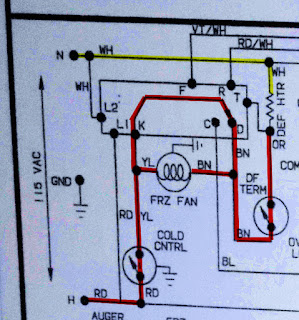BTUh, kWh, EER, CEER, SEER, SACC – when it comes to
understanding air conditioner capacity and efficiency there are certainly
plenty of arcane acronyms to sort through. The systems set up to allow
objective comparison of air conditioners are hindering that very goal because of
the many different measurement systems and terminology. Before discussing the
different terms I would like to quickly explain what an air conditioner does:
it pumps out heat. Much like a sump pump pumps out water from a basement or
crawl pace, an air conditioner pumps heat out of your house. You need a sump
pump that can pump water out as fast as it leaks in, or your basement will
flood. With air conditioning, you need one that can pump heat out of your house
faster than it leaks in, or your house will still get hot. The key point is
that the air conditioner moves heat. In the United States we measure heat in
British Thermal Units, or BTUs. The rate at which in air conditioner is able to
pump out heat is given in BTUs per hour, or BTUh. This tells us how many BTUs
of heat the unit can remove operating for an hour. The air conditioner’s
electrical use is measured in kilowatts hours, or kWh.
EER Energy Efficiency Ratio
The EER is the easiest measure to understand. It is the
cooling capacity in BTUh divided by the energy use in kWh. It tells you how
many BTU of heat removal (cooling) you get for each kWh of energy. However,
there are some things not taken into consideration. First is that it is a
steady state test, meaning the unit is up and operating at full efficiency
before any measurements are taken. No consideration is given for the energy
used at startup, shut down, and while plugged in but not running. Also, all
measurements are done at design condition, which is 80°F, 50% rh inside and
95°F outside.
SEER Seasonal Energy Efficiency Ratio
The Department of Energy devised this measurement for rating
central air conditioning units in 1978 to address some of the issues not
addressed by EER. Namely, cycling losses and operation at more than one
temperature. The idea is that SEER is supposed to show the BTUh/kWh over a
season, not just at one steady state condition. To simulate seasonal operation,
SEER testing includes cycling and operation at three different test conditions: 80°db/67°wb
inside and 95° outside, 80° db/67°wb inside and 82° outside, and 80°db 57°wb
inside and 67° outside. A unit’s SEER is generally higher than its EER because
the SEER includes operation at milder conditions. Currently, the minimum SEER
in the northern half of the US is 13 while the minimum SEER in the southern
half of the US is 14.
CEER Combined Energy Efficiency Ratio
The DOE devised CEER in 2014 specifically for window air
conditioning units. CEER is similar to SEER in that it measures efficiency at
two operating conditions: 95° and 83°. It also includes the energy used while
the unit is plugged in but not operating. A unit’s EER and CEER normally end up
being very close to each other with the CEER being slightly lower.
SACC Seasonally Adjusted Cooling Capacity
The SACC was devised in 2017 to measure the efficiency of
portable air conditioners. By portable, they mean the ones on wheels where the
whole unit sits in the room and an exhaust duct is placed in the window to
carry hot condenser air out. It is similar to the CEER in that it measures
capacity at both 95° and 83°. It also
includes adjustments for heat gains (cooling losses) from the exhaust duct plus
loses due to infiltration caused by having to stick the exhaust duct out the
window.
How do you convert between these different methods? You don’t
because they each have different testing specifications. There are some formulas
offered, but they can’t determine the differences in how different units will
respond at the varying testing conditions. The best you can do is understand each rating
and use them to compare units with similar ratings. Just as the EPA mileage
estimates don’t really tell you what your mileage will be with that new car you
just bought, these ratings will not really tell you the energy use for your new
air conditioner for a year. So which rating system do I believe is the most
reliable? Honestly, the simplest and oldest one: EER.




